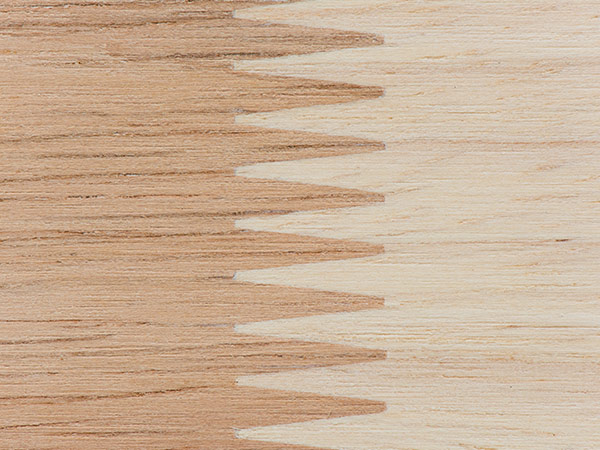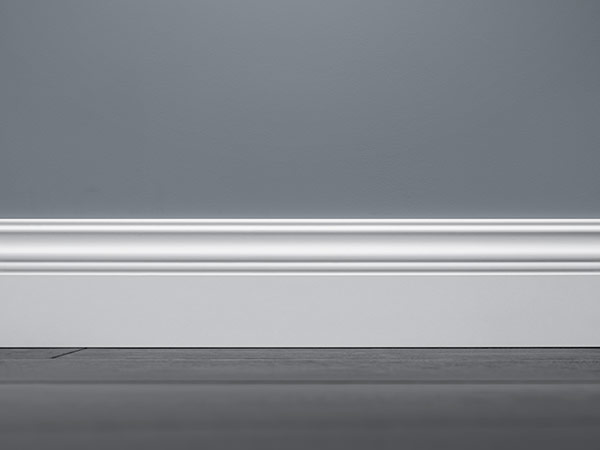

Moulding or Molding? The Difference a “U” Makes!
While plenty of interior designers would have you install moulding for a beautiful finishing touch to a room, many of us don’t know the best way to spell it. Simply put, “moulding” with a “u” is a holdover from British English, primarily still used in the southern U.S. While other areas may say “molding” without a “u," we’re all talking about the same thing: a decorative addition to walls to add interest or detail. Typically in straight lines, and often made from wood and painted or stained, moulding can also be called trim, chair rails, picture rails, or coving.
Context is key when talking about “mold” or “mould” in the U.S. While you might talk about mold growing in a damp area in the U.S. you will only see that word spelled “mould” in the UK. Same goes with “molding” (the decorative trim) which you might see in some areas of our country, but you’ll find it spelled “moulding” in others. For the sake of talking construction materials at McCoy’s, we use “moulding” when discussing the decorative trim, and “mold” when talking fungi.
What is Moulding?
Originally, moulding was a decorative addition to a room, used to cover or indicate a transition between two surfaces, like a wall and ceiling, or to provide protection where chairs or other furniture might damage walls. Some were practical, like a “picture rail” that could support nails and hanging picture wires or “plate rails” where the family china or other collections could be displayed.
Why Add Moulding?
Moulding is often found at the very least where walls meet floors. We might refer to simple moulding as “trim,” but really all moulding is a type of trim — just with varying designs. The fancier the moulding, likely the greater the cost, and vice versa. But while many designs were originally hand-carved, almost all modern decorative moulding is manufactured using large-scale production machines.
The Materials that Make Up Moulding
Moulding is frequently made from wood but can also be manufactured from just about any material, including plaster and synthetic materials like PVC, polyurethane, or polystyrene.

- Softwood moulding: Comes from pine and other coniferous trees that have needles, rather than leaves. Typical softwoods include cedar, pine, fir, redwood, and spruce trees. Softwoods are usually more flexible, which means they can be easier to shape, bend, and cut. Different types of softwoods have various benefits, like pine, which is lightweight and can hold up to meticulous carving. Spruce wood is also lightweight, and is known for its strength.
- Hardwood moulding: Is made from hardwoods like oak, walnut, poplar, teak, and others that lose their leaves in the fall. Benefits of hardwood moulding include durability and the ability to withstand a lot of wear and tear. Hardwoods like oak have a natural resistance to fungus and insects. Walnut is known for its sturdiness. Drawbacks to hardwood moulding include its price, which tends to be more than softwood moulding because the trees it comes from grow very slowly.
- Medium Density Fiberboard (MDF) Moulding: Is an engineered product that is made from wood fibers (sawdust, wood chips and shavings), resin, and wax. As you might imagine, this product brings a great deal of durability to the project. It’s typically very lightweight, economical, and is flexible – a good trait if you don’t have quite even walls. MDF moulding cannot be stained, but can be painted and its surface is typically very uniform. MDF is not a great choice for high-traffic corners, because its soft, delicate edges can be damaged easily. It also can be susceptible to water damage and is not ideal for bathrooms or other wet or humid areas.
- Finger joint moulding: Made from gluing together smaller pieces of wood (often pine) with small finger-like… yep, joints that are interlocked for strength but also flexibility. They can be stained to show off their beautiful natural grain.

Types of Moulding
There are many different types of moulding you might find in a typical home. They can include any or all of the following:

- Moulding set around a door or window, is sometimes (but not always) referred to as “casing.”
- At the top of a wall, where it meets the ceiling, you’ll frequently find “crown moulding,” so named because it’s A: located at the top of a room, like a crown on top of a head and B: often the most ornate and elaborate moulding design in a room.
- In the middle of a wall, you might have one horizontal line of moulding that sticks out to catch the brunt from a dining room chair or other furniture. This is commonly called a “chair rail” moulding.
- Still other designs might frame in rectangles to break up long hallways, add visual interest in a room, or even create a bedroom headboard.
- Built-in home features like bookcases or cabinets can also have moulding to add an aesthetic element that could be painted a coordinating or contrasting color, depending on the owner’s design choices.
- At the floor level, you’ll almost always see a strip of “baseboard” or “baseboard moulding” used to cover up that edge where the wall meets flooring.

Finally, wainscotting is another type of moulding, but is often applied in sheets, not unlike beadboard, to walls. Wainscotting is technically another type of moulding used to protect walls from damage or to add visual interest. It typically extends from the floor, partway up the wall to another layer of moulding – often a chair rail that runs horizontally.
Head Over to McCoy's for All Your Moulding Needs
At McCoy’s, we carry all types of moulding for use in interior design or home-building projects. We know how important those finishing touches can be to level up a room. And our experts can help you make sure you end up with just the right supplies to create a well-designed and well-built home. And heck, if you have a mold problem, we can help with that, too!
